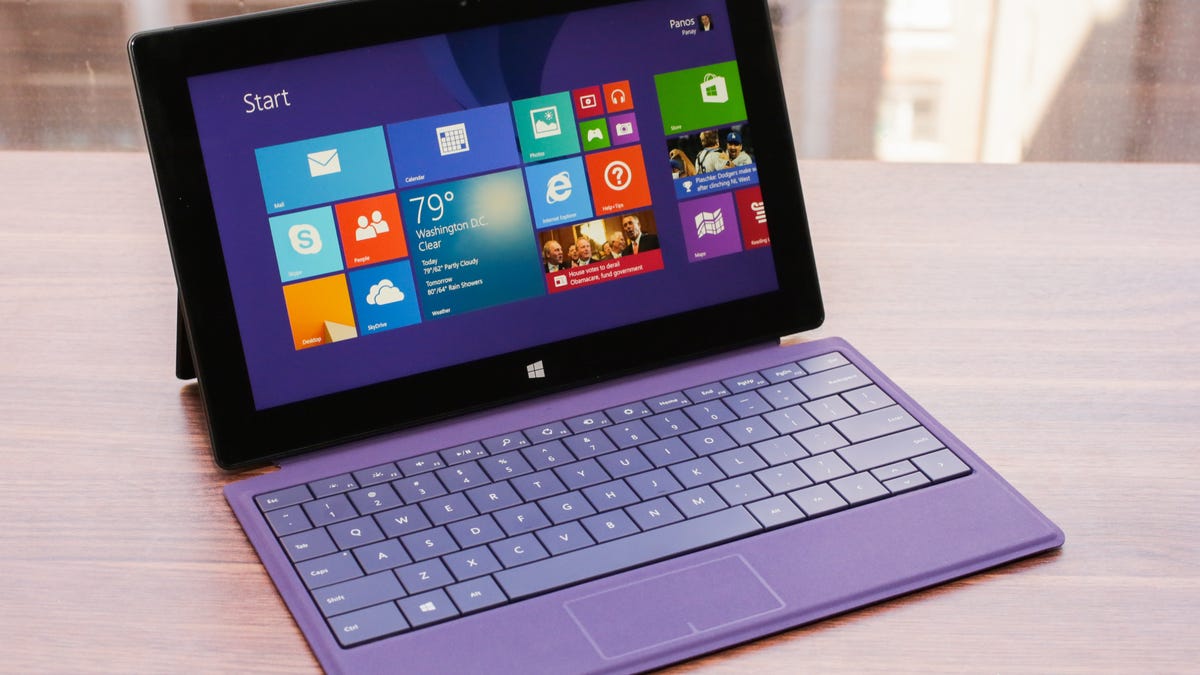Windows 8.1: What you need to know (FAQ)
Microsoft's added new features and slapped a ".1" to its latest version of Windows 8. What do you need to know? Read on.

One year after the debut of Windows 8, Windows 8.1 is here. It feels significantly less dramatic, but Microsoft's latest version of its PC operating system has some changes, and some requirements, all its own. If you're a curious would-be adopter, or a diligent Windows 8 upgrader, read on for some answers to your questions.
What's new?
Last year's Windows 8 was a brand-new, somewhat jarring operating system aimed at making touch-screen devices, and Windows devices that could convert between touch and keyboard/mouse modes, easier to use.
Windows 8.1 is a series of subtle changes, a software patch of sorts to last year's software. There are some differences, but most of them seem to exist to appeal to more-traditional PC users -- those who want more of a return to the traditional Windows experience. The biggest changes are:
- You can boot directly into Desktop mode instead of the tile-based app user interface
- The long-lost Start button is back
- You can snap more apps side-by-side for better multitasking
- There's also better cross-system search, along with search that ties into cloud-based SkyDrive storage
For the full rundown, read CNET's review. Or, check out our list of the top new features you need to know in Windows 8.1.
What's the different between Windows 8.1 and Windows RT?
Windows 8.1 is the "real" Windows OS that runs on PCs and tablets; it includes backward compatibility with most earlier Windows software -- programs and games that were designed to run on Windows 7, Vista, and XP. By contrast, Windows RT is a stripped-down version of Windows 8.1 that does not deliver that backward compatibility. (The reason: RT machines run ARM chips rather than full Intel or AMD "x86" CPUs, allowing them longer battery life and cheaper prices.) Instead, Windows RT only runs the apps available in the Windows Store (which, confusingly, is available in both 8.1 and RT). Notably, however, Windows RT includes a free copy of Microsoft Office 2013, which has been designed to run on both versions of Windows.
While there were a handful of devices that ran RT in 2012, so far, the
Do I need to buy a tablet to use Windows 8.1?
No, you can use any PC, as long as it fits the Windows 8.1 hardware requirements. Touch screens aren't required. In fact, Windows 8.1 makes it easier: you can stay in "Desktop mode" and just use your PC in a way that (largely) bypasses the touch-friendly tile interface. Even those, should you encounter them, can be navigated with keyboard and mouse/touch pad, however.
Is the Start button back?
Yes -- sort of. The annoying absence of a Start button made easy-access navigation on Windows 8 a confusing chore, but it's back -- although it just provides a shortcut to the tile menu. However, right-clicking it brings up a contextual menu with additional options.
How do I get Windows 8.1, and what does it cost?
For existing Windows 8 users, Windows 8.1 is a free upgrade. Just go the app store if you're a Windows 8 user, and start downloading.
If you're coming from Windows 7 (or an even earlier version of Windows), it can be bought here for $120, or $200 for the business-targeted pro version. For more step-by-step information, read our how-to guide.
What are the system requirements?
For the full rundown, click here. But here's the bare-bones needs:
- 1GHz or faster processor with support for PAE, NX, and SSE2
- 1GB of RAM for 32-bit computing, or 2GB for 64-bit
- 16GB of hard-drive space (32-bit) or 20GB (64-bit)
- A Microsoft DirectX 9 graphics device with WDDM driver
What's the ideal system to use with Windows 8.1?
Despite the return of the Start button, having a touch screen is still the preferred way to go with Windows 8.1. In the portable realm, look for a tablet (
In the desktop world, larger touch-screen all-in-one machines like the Dell XPS One 27 or Sony Vaio Tap 21 are ideal.
For complete lists of our favorites in every category, check out CNET's list of best laptops and best desktop PCs.
Should you upgrade to Windows 8.1?
My colleague Dan Ackerman said it best in his Windows 8.1 review. If you're a regular PC user, I'll repeat in his paraphrased words what you should do:
- If you're an existing Windows 8 user, the update is free and largely seamless, and adds some useful new tweaks and features. You should upgrade as soon as possible.
- If you're a Windows 7 user thinking of upgrading your legacy hardware, consider keeping with Windows 7 until it's time for a new PC; those touch-optimized Windows 8 and 8.1 elements won't do much for you anyway, and Windows 7 still works well with all sorts of applications.
Either way, you'll probably have to get used to Windows 8 eventually, since it's Microsoft's PC operating system now. It's really, however, more of a finishing touch for Windows 8-optimized machines.
The best way to get Windows 8.1? Wait to buy a new PC with Windows 8 or 8.1 installed: it'll run the software better, and it won't cost anything extra.
I'm moving on from Windows; what other alternatives are there?
Windows isn't the only game in town: you can always opt for a

